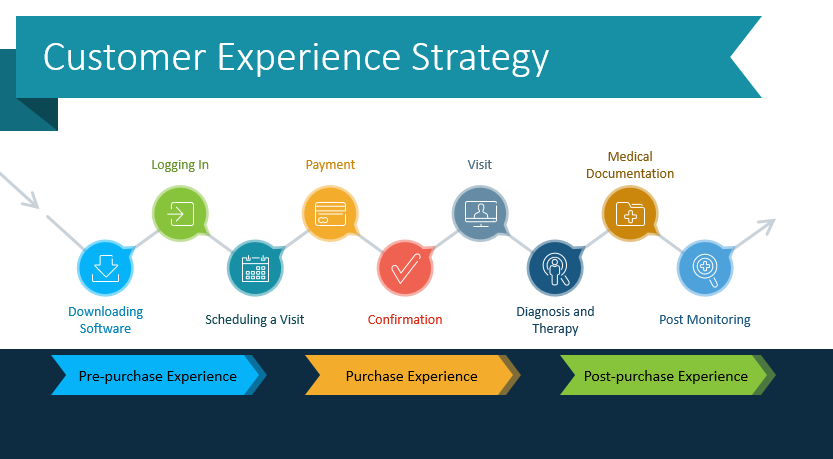Table Of Content

Such a strategy often bears fruit, with 65 percent of US-based customers finding a positive brand experience more influential than an advertising campaign to recruit new customers, as per a PwC study. Then, maybe bring in a visual that highlights the new framework. These individual touchpoints are perhaps the same as the original, but creating a visual picture is helpful when adding proactive rules to streamline the customer journey. While some may choose to design a new journey from scratch, most companies will likely have an experience that they are ready to upgrade. We’re used to thinking that people are inclined to leave negative reviews more often compared to positive ones. According to a recent American Express study, US-based consumers, on average, publish more positive reviews.
Journey Mapping: The Essentials
Then, the company can design and build a better customer experience. For instance, catching navigation problems early in the design process ensures smooth customer interaction upon launch. Rather than aimlessly discussing solutions in conference rooms, design teams can get hard evidence on enhancing excellent customer experience by testing with diverse participants. Videos of customers interacting with app prototypes or website flows can illuminate common user issues.
Get the CMSWire Mobile App

Customers now have different expectations regarding online and in-person customer service and companies must be able to handle these expectations effectively. CX directly impacts a business’s bottom line as customers are likely to return to a business if they have a positive experience. They are also willing to pay more if feasible and more likely to recommend it to colleagues. When every interaction with your brand leaves your customers highly satisfied and happy, brand loyalty is built.
User Experience and Customer Experience - What’s the Difference?
The first thing to note is that UX is part of the CX, as UX deals with the user interactions of a specific feature of your product. CX has a much broader scope and covers all customer interactions with your company or brand. Existing customers are more likely to repeat purchases if they're satisfied. It's an important strategy to reduce churn and build a reliable customer base. In the second lesson, you’ll learn how to think like a UX designer. This lesson also introduces you to the very first exercise for you to dip your toes into the cool waters of user experience.
Investing in customer experience design (CX) has tangible benefits that can significantly impact your business's bottom line. Understanding the merits of a solid CX design strategy can foster growth and ensure customer satisfaction. If you added up the sum of all knowledge on each individual user experience with your products and services; you would (theoretically) be able to explain your customer experience. Sadly, that’s not quite how it works and it’s why we need to remain conscious of both when we design products and services.
Monitor Customer Feedback and Reviews
Also, remember to continually test, learn, and optimize new customer journeys before going live with the implementation. After all, even the most sophisticated and comprehensive CX design methodologies need reworking. Harnessing low-code tools is helpful here, accelerating a cumbersome process.
Exploring the hyper-competitive future of customer experience - IBM
Exploring the hyper-competitive future of customer experience.
Posted: Fri, 19 Jan 2024 08:00:00 GMT [source]
The film Pretty Woman, of course—but not that scene where the high-end Rodeo Drive shop blatantly ignores Julia Roberts because she doesn’t look like their typical customer. The stellar customer experience moment happens a few minutes later when another store treats Roberts like a princess, giving her fabulous options and taking her wants and needs into consideration. Key metrics collected in surveys, including CSAT, NPS, and CES, provide quantifiable data on satisfaction. Additionally, techniques like customer interviews, focus groups, and usability testing gather qualitative feedback on emotions and frustration to supplement metrics. The key is to observe contexts firsthand rather than make assumptions during design.
This program is perfect for:
Make sure your social media channels live up to the same standards as your customer service, and your strategy will be more likely to delight and engage. Whether initially creating these personas or updating them for new audiences or experiences, you’ll need to gather the persona research you need through the collection of data and analysis. You’ll need to find the themes and insights that will be helpful for informing your design. For example, are your customers always using their mobiles to make purchases? Will they prefer to pay via card, or will they prefer a credit option? You can collect this data through interviews, customer feedback forms, polls and more.
CX encompasses all contact points, from the initial awareness to post-purchase interactions, striving for customer delight and fostering loyalty. On the other hand, UX design zeroes in on the usability and function of individual products or features, affecting parts of the customer journey. A common misconception is that CX design is user experience (UX) design.
For example, an onboarding checklist may reduce service call volume by 50% in six months, or self-help options may answer 20% of customers' queries, lowering human handling needs. Such well-defined criteria help focus team efforts on moving metrics that enhance the CX design process. One of the very first things to tackle in customer experience design is identifying the top sources of customer information. Feedback is a valuable tool for understanding your customers’ needs, preferences, and frustrations. Customer experience design is vital for capturing the attention of those who encounter your brand. Not only that, it helps to shape the perception of your services or products, helping to engage customers in a way that they like and meeting their needs in a way they can appreciate.
These brands demonstrate how effective CX design can significantly enhance customer satisfaction and loyalty. By focusing on the needs and preferences of customers and leveraging technology to improve interactions, these businesses have created standout experiences in their respective industries. By focusing on a customer-centric approach for your customer experience design process, you can create amazing experiences that will bring your customers back time and time again. Now you understand what touchpoints and interactions you want to measure and improve, creating a system to do this is the next step.
Creating a seamless customer experience is no small feat—it requires a deep dive into the customer journey, identifying every interaction they have with your brand. Enables personalizing ads based on user data and interactions, allowing for more relevant advertising experiences across Google services. Allows for content and ad personalization across Google services based on user behavior. Permits storing data to personalize content and ads across Google services based on user behavior, enhancing overall user experience.
Once that’s clear, you can start linking it to why your customers are reacting well to your customer experience design strategy. It’s also more likely to be fixed on specific interactions, rather than taking a holistic overview of the entire customer journey map.. In customer experience design, focusing on strategies that meet and exceed customer expectations at every interaction with your brand is crucial. This course will help you if you want to design smooth shopping experiences, easy signup flows or engaging apps. Then, finish with the ability to create journey maps and lead workshops. You need comprehensive data—both qualitative and quantitative—to create an accurate and useful journey map.
This alleviates your current customer base concerns and showcases your commitment to continuous improvement and satisfaction. When building your customer experience CX design, follow these best practices to ensure success. For new customers whose primary JTBD is “simplifying team communication,” the onboarding could focus on showcasing features like integrated team chat, notification settings for updates, and how to use tagging effectively. A user persona is a detailed representation of a product’s typical user based on real insights, not assumptions. It outlines their wants, needs, and pain points from the data you collect. Customers are willing to pay more when you deliver a superior customer experience.
Based on customer experience, they will determine whether to stop, retest, or proceed prior to scaling up. Rather than launching a product, feature, or service at full scale, as traditional CX teams often do, design brings a test-and-learn approach that de-risks the solution and the impact to the business. An agile design-and-development approach that culminates with an MVP allows teams to better—and more quickly—understand what customers want and deliver it to them. This ever-evolving landscape underlines the importance of customer experience design. While this discipline’s goal is to increase conversions and the company’s bottom line, it does that by creating fulfilling experiences for a brand’s clientele by leveraging empathy and purpose. It listens on social media and across myriad other digital and offline channels, allowing you to learn how customers are talking about your brand.

No comments:
Post a Comment